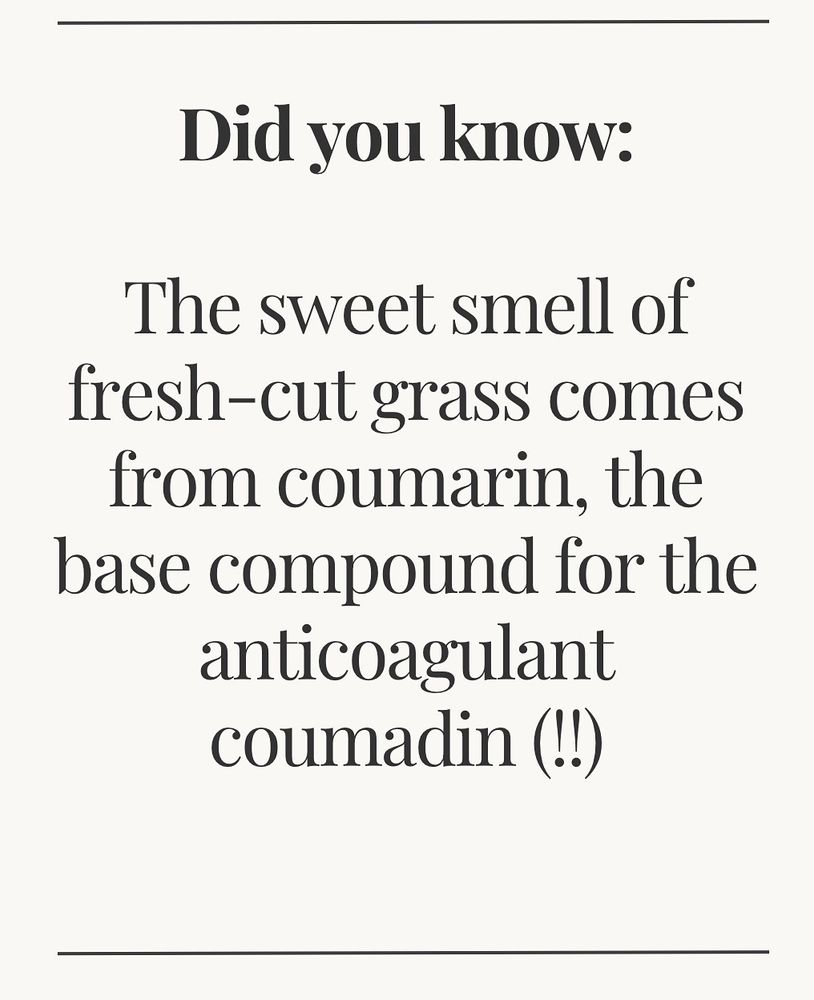
FORTHCOMING BOOK: WHY DOESN’T YOUR STOMACH DIGEST ITSELF? (W.W. Norton)
In 2007, 3,000 of these tiny animals orbited the Earth OUTSIDE a space rocket for 12 days.
>2/3 of them survived the vacuum of space and being blasted with solar radiation.
www.esa.int/Science_Expl...

In 2007, 3,000 of these tiny animals orbited the Earth OUTSIDE a space rocket for 12 days.
>2/3 of them survived the vacuum of space and being blasted with solar radiation.
www.esa.int/Science_Expl...
www.nejm.org/doi/full/10....

www.nejm.org/doi/full/10....

www.cell.com/cell-reports...

www.cell.com/cell-reports...
Another mechanism seems to be that the local hyperosmolar state induced by salt in wounds also creates osmotic stress on cells, leading to cellular injury and death.
This independently activates nociceptive neurons in the skin.
pubmed.ncbi.nlm.nih.gov/29675710/

Another mechanism seems to be that the local hyperosmolar state induced by salt in wounds also creates osmotic stress on cells, leading to cellular injury and death.
This independently activates nociceptive neurons in the skin.
pubmed.ncbi.nlm.nih.gov/29675710/
TRPV/capsaicin signaling likely isn't the whole story, though, because in the same study as #11, TRPV4 knockout mice had equivalent (and intense) pain responses to a 10% saline solution.
pubmed.ncbi.nlm.nih.gov/16213085/

TRPV/capsaicin signaling likely isn't the whole story, though, because in the same study as #11, TRPV4 knockout mice had equivalent (and intense) pain responses to a 10% saline solution.
pubmed.ncbi.nlm.nih.gov/16213085/
Glutamate may be a key mediator of salt-induced pain, as it is known to be released after TRPV 1 and 4 activation (pubmed.ncbi.nlm.nih.gov/39626870/), and injection of 5.8% hypertonic saline into the biceps muscle leads to spikes in glutamate production.
pubmed.ncbi.nlm.nih.gov/26485281/

Glutamate may be a key mediator of salt-induced pain, as it is known to be released after TRPV 1 and 4 activation (pubmed.ncbi.nlm.nih.gov/39626870/), and injection of 5.8% hypertonic saline into the biceps muscle leads to spikes in glutamate production.
pubmed.ncbi.nlm.nih.gov/26485281/
In a mouse model, mild increases in osmolarity (eg w/ 2% saline) in paw wounds also activated a different nociceptive capsaicin-sensitive receptor from the same family called TRPV4.
pubmed.ncbi.nlm.nih.gov/16213085/
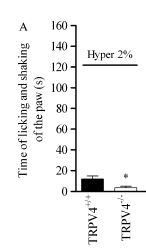
In a mouse model, mild increases in osmolarity (eg w/ 2% saline) in paw wounds also activated a different nociceptive capsaicin-sensitive receptor from the same family called TRPV4.
pubmed.ncbi.nlm.nih.gov/16213085/
This dramatic ⬆️ in local osmolarity stimulates osmosensitive' cation pain receptor channels called TRPV (transient receptor potential vanilloid), similar to how these receptors respond to capsaicin.
Example of activation of TRPV1 is shown below.
pubmed.ncbi.nlm.nih.gov/21779403/

This dramatic ⬆️ in local osmolarity stimulates osmosensitive' cation pain receptor channels called TRPV (transient receptor potential vanilloid), similar to how these receptors respond to capsaicin.
Example of activation of TRPV1 is shown below.
pubmed.ncbi.nlm.nih.gov/21779403/
The degree to which NaCl can induce painful responses in the body has been studied in physiology experiments dating back to the 1930s.
In this 1997 study, infusing hypertonic saline into a muscle induced significantly more pain than normal saline.
pubmed.ncbi.nlm.nih.gov/9060024/

The degree to which NaCl can induce painful responses in the body has been studied in physiology experiments dating back to the 1930s.
In this 1997 study, infusing hypertonic saline into a muscle induced significantly more pain than normal saline.
pubmed.ncbi.nlm.nih.gov/9060024/
One of the earliest references I came across for salt causing pain in wounds was from Pliny the Elder in the 1st century CE.
He recommended adding salt to beef fat to cure boils, but to avoid using salt if the combination caused pain.
www.perseus.tufts.edu/hopper/text?...

One of the earliest references I came across for salt causing pain in wounds was from Pliny the Elder in the 1st century CE.
He recommended adding salt to beef fat to cure boils, but to avoid using salt if the combination caused pain.
www.perseus.tufts.edu/hopper/text?...
The Hippocratic authors in ancient Greece endorsed sea water as a wound healing treatment, observing that it helped heal wounds on the hands of fishermen.
A few centuries later, Galen similarly recommended salt to aid in wound healing.
pmc.ncbi.nlm.nih.gov/articles/PMC...

The Hippocratic authors in ancient Greece endorsed sea water as a wound healing treatment, observing that it helped heal wounds on the hands of fishermen.
A few centuries later, Galen similarly recommended salt to aid in wound healing.
pmc.ncbi.nlm.nih.gov/articles/PMC...
This granted great value to salt throughout the ancient world.
Ex: in ancient China, wars were fought thousands of years ago over control of salt flats at Lake Yuncheng, and salt later became a form of traded currency.
historycooperative.org/the-history-...

This granted great value to salt throughout the ancient world.
Ex: in ancient China, wars were fought thousands of years ago over control of salt flats at Lake Yuncheng, and salt later became a form of traded currency.
historycooperative.org/the-history-...
Likewise, because of its antiseptic and desiccating properties, salt has been used to preserve fresh food going back at least 5,000 years ago in places including China, Egypt, Mesopotamia, and southern Europe.
pubmed.ncbi.nlm.nih.gov/31721796

Likewise, because of its antiseptic and desiccating properties, salt has been used to preserve fresh food going back at least 5,000 years ago in places including China, Egypt, Mesopotamia, and southern Europe.
pubmed.ncbi.nlm.nih.gov/31721796
Going back millenia, salt has been used as an antiseptic to prevent decay of organic material.
For example, the ancient Egyptians used salt in their mummification solutions.
pubmed.ncbi.nlm.nih.gov/11677605/

Going back millenia, salt has been used as an antiseptic to prevent decay of organic material.
For example, the ancient Egyptians used salt in their mummification solutions.
pubmed.ncbi.nlm.nih.gov/11677605/
As the old idiom goes, one deliberately causes additional pain by "pouring/rubbing salt in an open wound".
But this is also literally true. Physiologically, why would it hurt so much to have salt poured into a wound?

As the old idiom goes, one deliberately causes additional pain by "pouring/rubbing salt in an open wound".
But this is also literally true. Physiologically, why would it hurt so much to have salt poured into a wound?
Our version of a foreign nucleic acid sensor called STING, which activates interferon, is almost identical to the version that bacteria use to sense and defend against viruses.
www.nature.com/articles/s41...

Our version of a foreign nucleic acid sensor called STING, which activates interferon, is almost identical to the version that bacteria use to sense and defend against viruses.
www.nature.com/articles/s41...
In times of uncertainty, curiosity and humanism can help us find joy as clinicians.
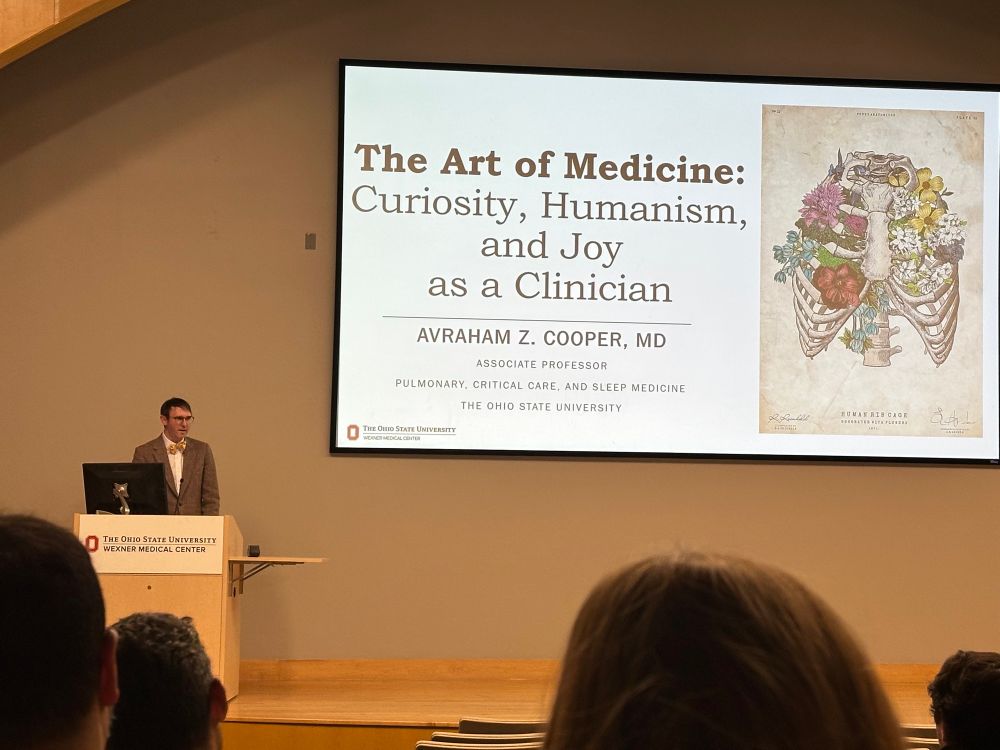
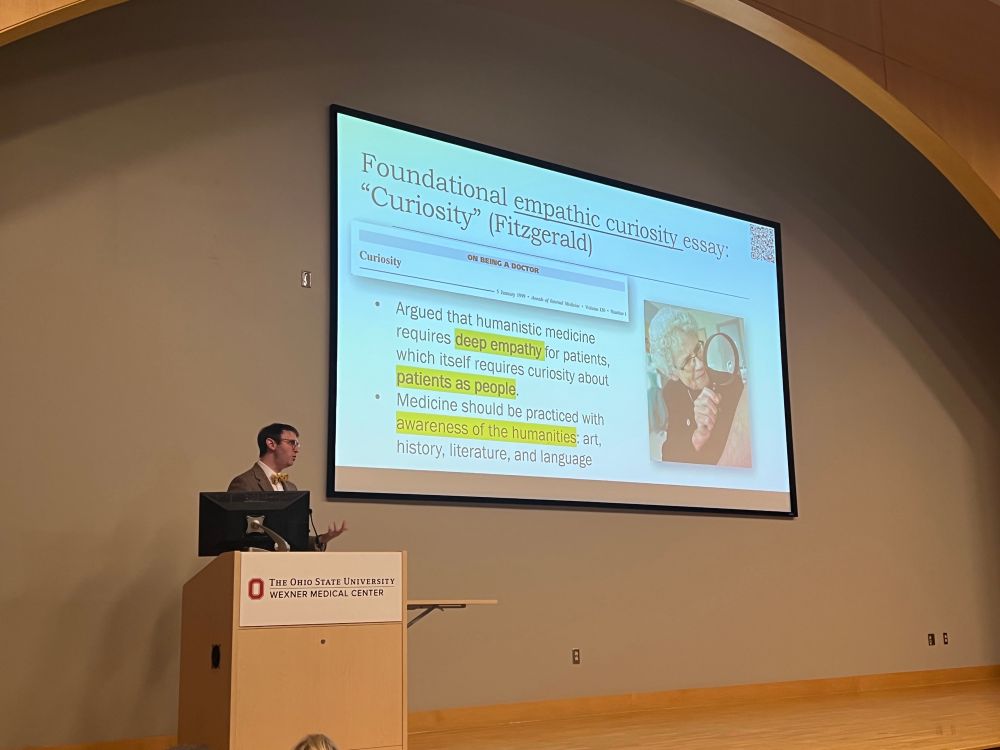

In times of uncertainty, curiosity and humanism can help us find joy as clinicians.
www.avrahamcooper.com
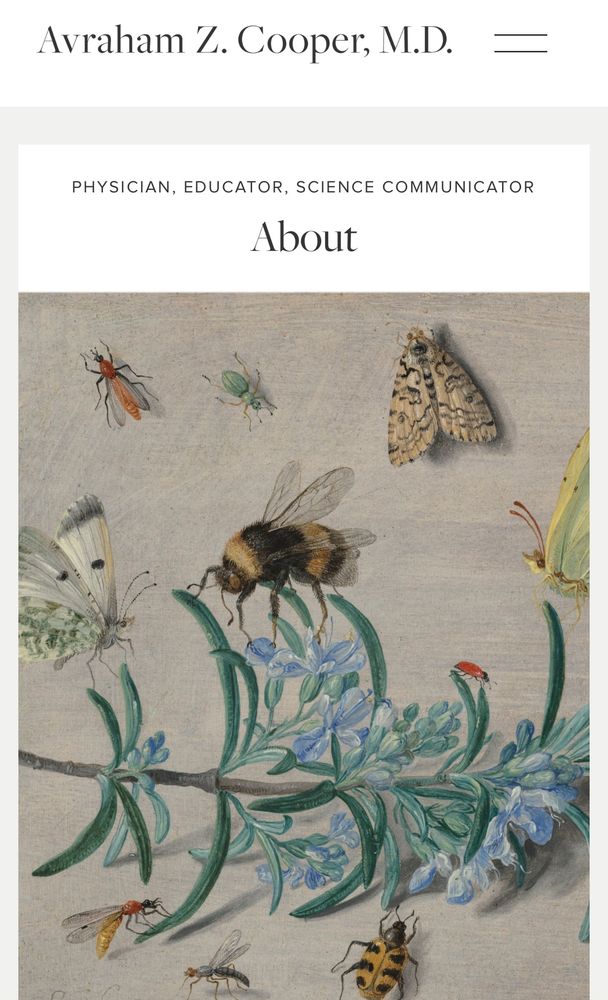
www.avrahamcooper.com
medartsgallery.squarespace.com/work/cooper

medartsgallery.squarespace.com/work/cooper
www.thelancet.com/journals/lan...

www.thelancet.com/journals/lan...
www.cell.com/cell/fulltex...

www.cell.com/cell/fulltex...


